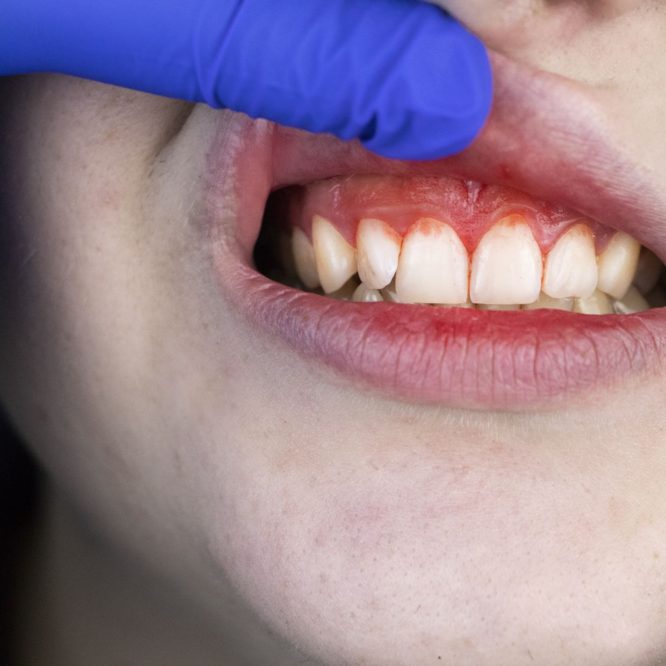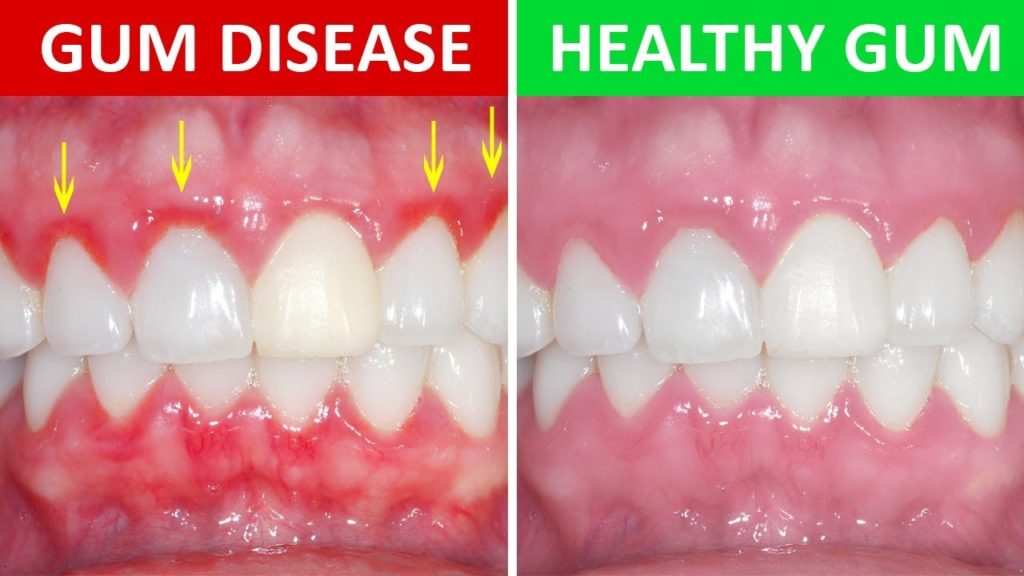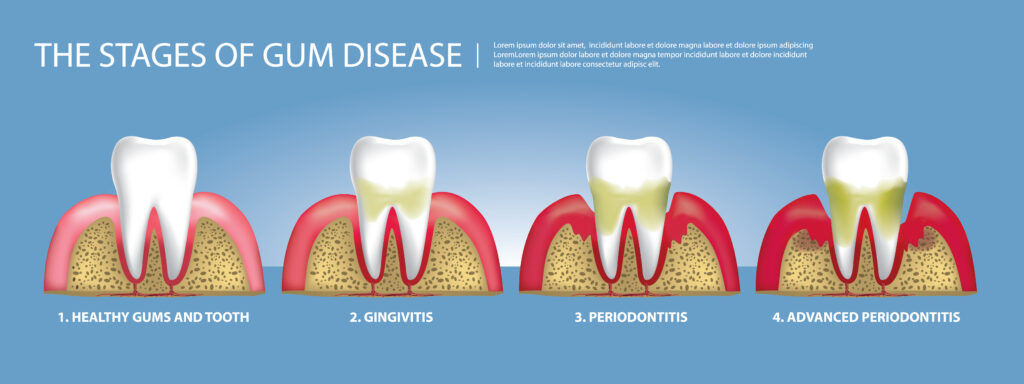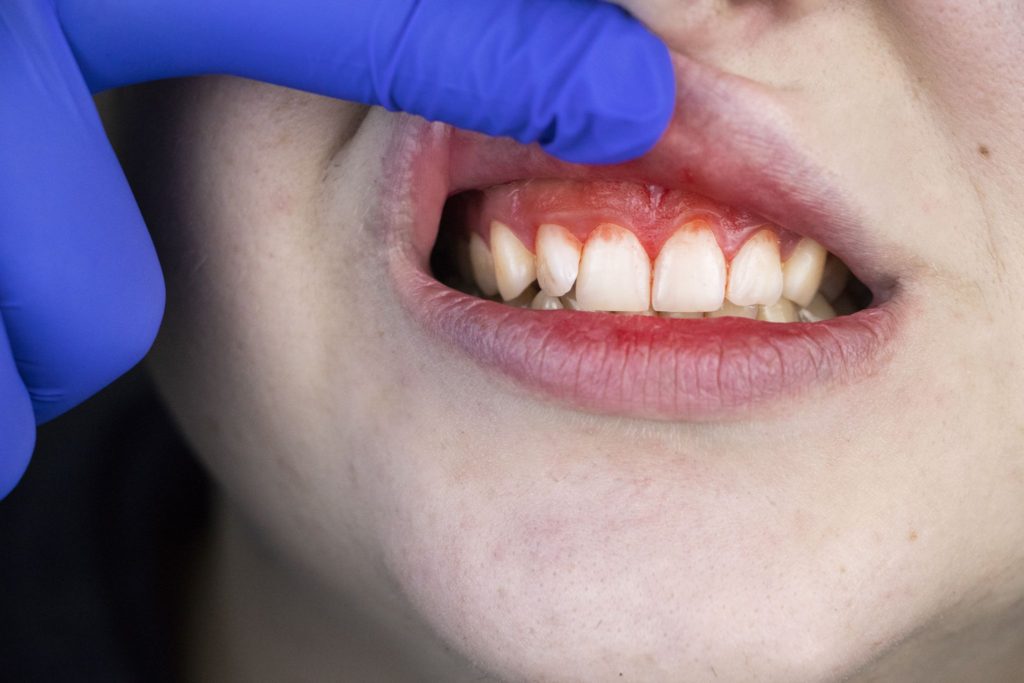

If you notice your gums inflamed, it is essential that you go to the periodontist as soon as possible. It is very likely that the inflammation of the gums, as well as its redness and bleeding, is due to the presence of an infection in the mouth, caused by periodontal diseases.
The study of the gums is very important to prevent bacteria in the mouth from causing serious damage to the area. If we do not eliminate oral infections correctly, the destruction of tissues will occur uncontrollably, which can lead to tooth loss.
In addition to swollen gums, other symptoms of periodontal disease include bleeding gums, reddened gums, bad breath, tooth sensitivity, and tooth mobility. Through a complete periodontal study, your dentist will analyze the causes of gum inflammation, in order to offer you a personalized periodontal treatment.
Main cause of swollen gums
The most common cause of inflamed gums is the presence of some type of periodontal disease. These types of pathologies are caused by the action of bacteria in the mouth. Bacterial plaque is completely normal, but when it is not removed correctly (through oral hygiene) it will cause serious damage to the mouth.
Periodontal diseases are infectious since they are caused by bacteria. In order to avoid this type of pathology, it is very important that you pay great attention to your oral hygiene. Remember that you should brush your teeth between two and three times every day, using a good brushing technique and with a quality toothbrush.
In addition, the use of interdental hygiene tools, such as dental floss or interproximal brushes, is essential. In order to avoid inflamed gums, it is essential to come to visit a dental clinic for professional dental cleanings on a regular basis. Keep in mind that the only way to remove tartar is by performing oral prophylaxis in the dentist’s office since toothbrushing alone cannot successfully remove it.

Types of periodontal or gum disease :
- Gingivitis
Gingivitis is the early stage of periodontal disease. The first signs of infection will appear lightly. You may notice your gums swollen, red, and bleeding. This is an indication that something is not working well at the oral level, so it is important to visit the dentist.
At this time the disease is reversible and its treatment is minimally invasive. The problem is not to act quickly, since the destruction of tissues is very rapid if the infection is not remedied.
To treat gingivitis it is very common to perform a dental curettage. It is a deep dental cleaning, which eliminates the bacteria that lodge under the gum line. Before designing the approach, our medical team performs a complete oral study, with the purpose of successfully eliminating the infection.
- Periodontitis
Periodontitis is the most complex stage of periodontal disease. Other symptoms are added to the inflamed, red, and bleeding gums, which indicate that the seriousness of the situation is remarkable. The pathology is no longer reversible, so our main objective is to stop the infection quickly and plan quality treatment.
It is possible that the familiar periodontal pockets have formed, which are accumulations of bacteria in the oral structures. Removing these periodontal pockets and removing the infection is essential to prevent tooth loss.
Periodontitis causes serious structural damage. This means that the periodontal tissues are so affected that tooth loss may be the ultimate consequence. In these cases, dental implant treatments are key to restoring the loss of dental aesthetics and functionality of the mouth.
If you also have swollen gums gingival retraction is possible that periodontal treatment includes an oral surgery for a gum graft. In this way, we can avoid that the dental roots are exposed or continue to suffer damage.

These are some symptoms of gum disease :
- Swollen gums.
- Bleeding gums
- Gum redness
- Constant halitosis.
- Increased tooth sensitivity.
- Receding gums.
- Toothache.

Follow Dr. Pascal Terjanian’s blog and social media to keep up with all the latest dental news and trends.

